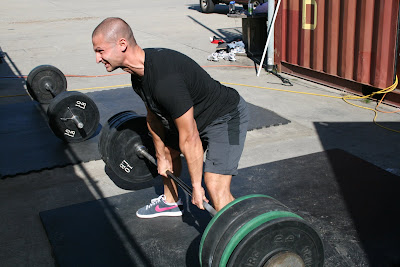
So, a recent study found that mental fatigue can have an effect on your physical performance. Let's forget for a moment that the study kind of sucked (16 people?! Talk about a sample-size!) and hold back the 'no-shit' that should be coming out of your mouth, as anyone who has done any sort of training in anything will tell you that coming into the game 'less than motivated' will lead to a sub-par performance.
Let's just think about this for a moment in terms of the things that you do to create mental fatigue before and during your workout in an attempt to minimize these less desirable in the future.
Do you audibly groan when the movements of the workout are announced?
Is the phrase 'man I hate _______' uttered from your lips?
Does the weight of the rest of your day cloud the moment?
Can you scrunch your face any harder when working out?

Do you allow the rep scheme or load of a workout to dominate your soul?
All of the above have the potential to create un-necessary mental fatigue. Stop it! Compare the placid, benevolent face of Mr. Robinson below to the Face Of Pain(Tm) of Mr. Henry above:

Which do you think sends a stronger message to the brain that all is well and it's okay to keep going?
On a personal note, I always try to remind myself before some excellent hybrid that I really do enjoy this stuff. Seriously! I wouldn't be doing it otherwise. You all are no different, whether you know it or not. Don't believe me? Look at all the happy people below. And yes, that was just post-sunrise before most people are even up.

Don't create that which doesn't need to be created,
-Boz



















.bmp)








